Capturing the Momentum of Early Summer in Flowers
As the sun grows stronger and the sky deepens its blue, early summer is upon us.
This work was born from the challenge of expressing that seasonal energy using only two plant materials.
Bright pink gladiolus and the bold presence of monstera—instead of competing, they complement each other, weaving a quiet yet powerful story.
This arrangement serves as a prologue to summer: calm on the surface, yet pulsing with energy.
It gently announces the season’s arrival to anyone who sees it.
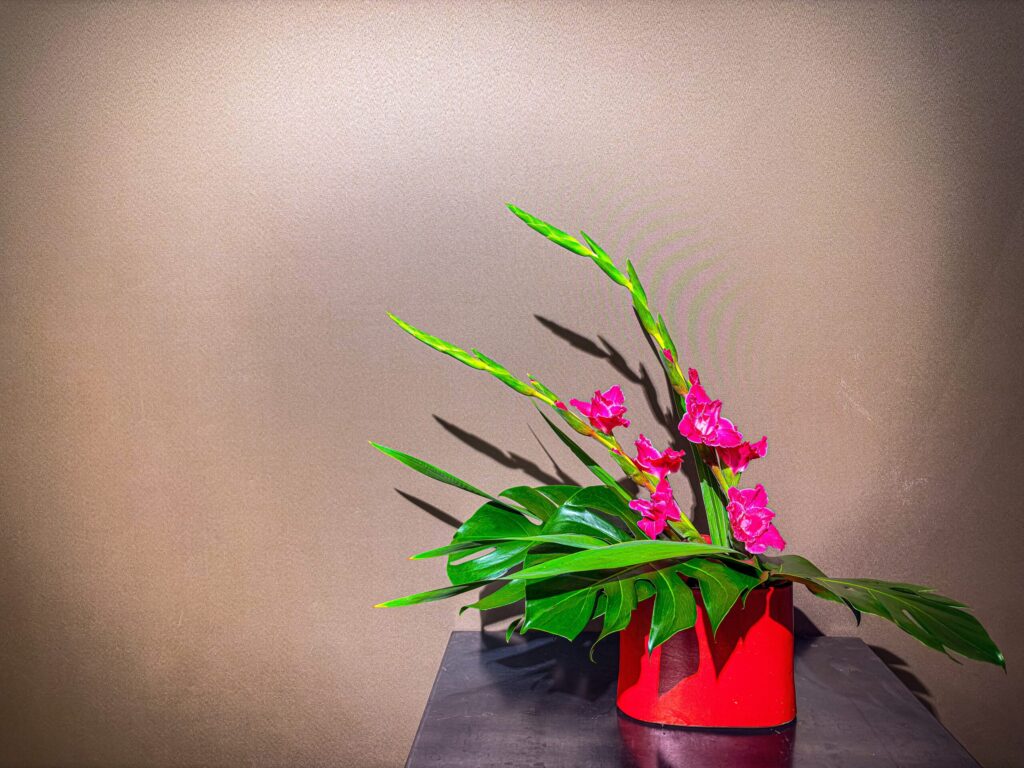

※This is an affiliate link. Your purchase supports this blog – thank you!
- Structure and Concept of the Arrangement
- Introducing the Materials: Gladiolus and Monstera
- About the Flower Vessel
- Using Ichimonji-dome (Horizontal Stick Fixing): Tips and Precautions
- Side View and Depth – Designing with Multi-Angle Awareness
- From a Doctor’s Viewpoint: Flowers as a Gentle Prescription
- 🔗 Related links
- 🌸 Send Flowers Worldwide — A Thoughtful Gift Across Borders
- 🌸 If this post inspired you to try ikebana, check out our recommended lessons here:
Structure and Concept of the Arrangement
The central stage of this arrangement is the horizontal spread of monstera leaves, forming a flat yet dominant green plane.
From this base, gladiolus stems stretch diagonally upward, drawing the viewer’s gaze with a sense of movement and lift.
The dynamic lines of the gladiolus seem to mirror the seasonal transition—from the gentleness of spring to the bold light of summer.
Moreover, I intentionally placed the gladiolus leaves so they peek through the gaps between the monstera leaves.
This not only breaks the flatness but also adds depth and interest from every angle.
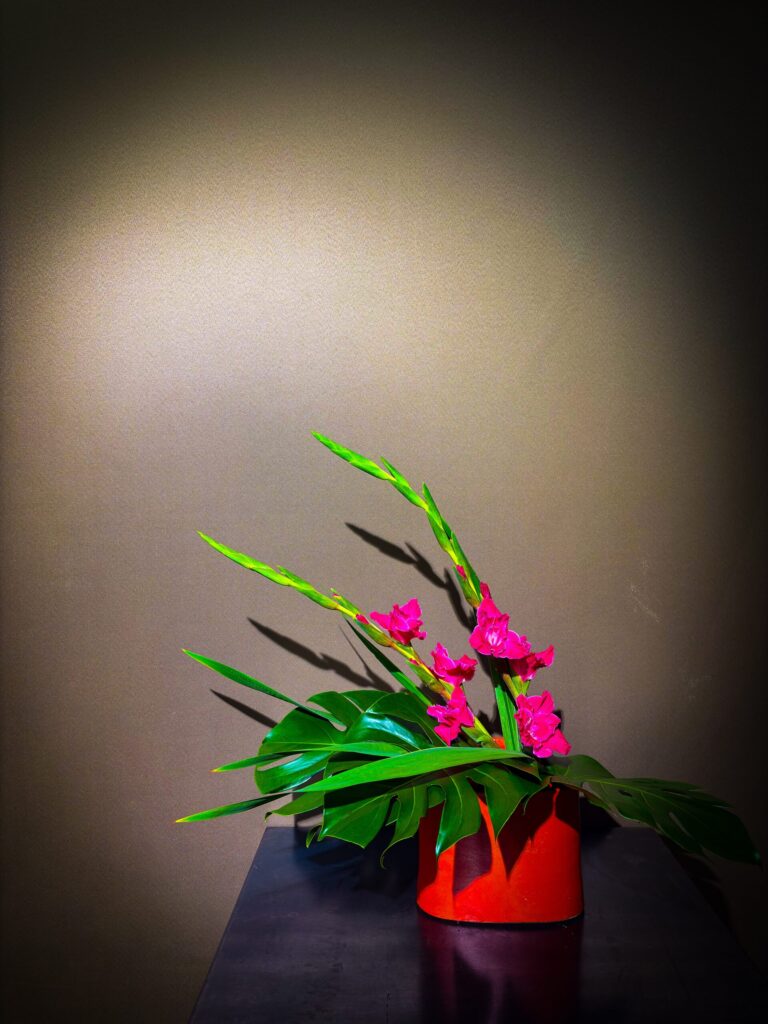
Introducing the Materials: Gladiolus and Monstera
Gladiolus
Gladiolus is a perennial bulb plant in the iris family, known for its tall, straight stems lined with sequentially blooming flowers that resemble a “ladder of light.”
Its English name, sword lily, comes from the Latin gladius meaning “sword.”
Symbolically, gladiolus represents victory, sincerity, and passion—qualities that echo its strong, upright form.
Monstera
Monstera is a tropical plant native to the rainforests of Central and South America.
Its split and perforated leaves are thought to help it gather light and water more efficiently.
In ikebana, monstera serves as a powerful structural element or backdrop, often with a single leaf making a bold visual statement.
Its organic curves contrast beautifully with the vertical lines of flowers like gladiolus.
About the Flower Vessel
This red ceramic vessel might initially appear too bold, especially when paired with strong pinks like those of gladiolus.
There was concern that the colors might clash.
However, by covering the vessel’s rim with monstera leaves, I was able to tone down its visual intensity.
As a result, the vase plays a subtle supporting role—adding warmth without overpowering the composition.
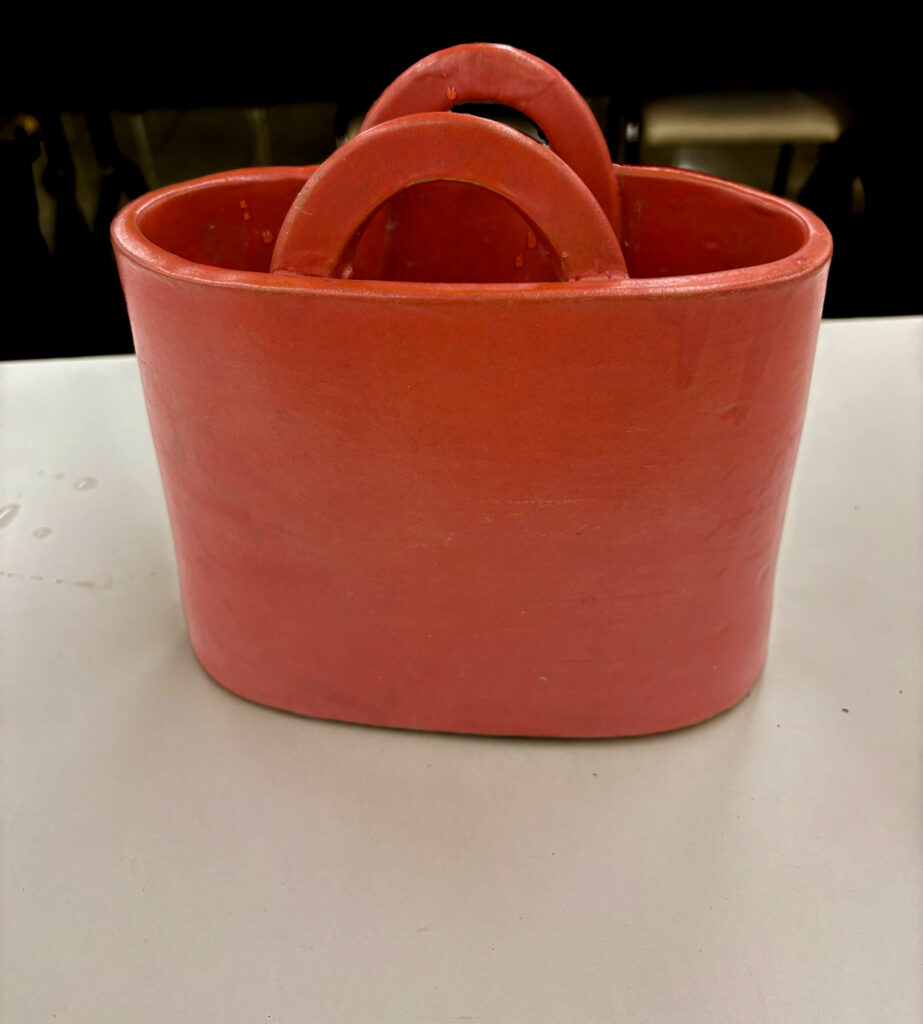
Using Ichimonji-dome (Horizontal Stick Fixing): Tips and Precautions
Inside the vessel, I placed three horizontal twigs across the top to create an ichimonji-dome.
This traditional Japanese technique builds a stable “base” for stems without the need for a kenzan.
It results in a more natural look and pairs well with both garden-style and modern arrangements.
⚠️ Important: Do not use this method with glass or delicate, high-end containers.
Fixing the branches in place can cause scratches or even cracks. Always opt for sturdy pottery or similarly durable materials.
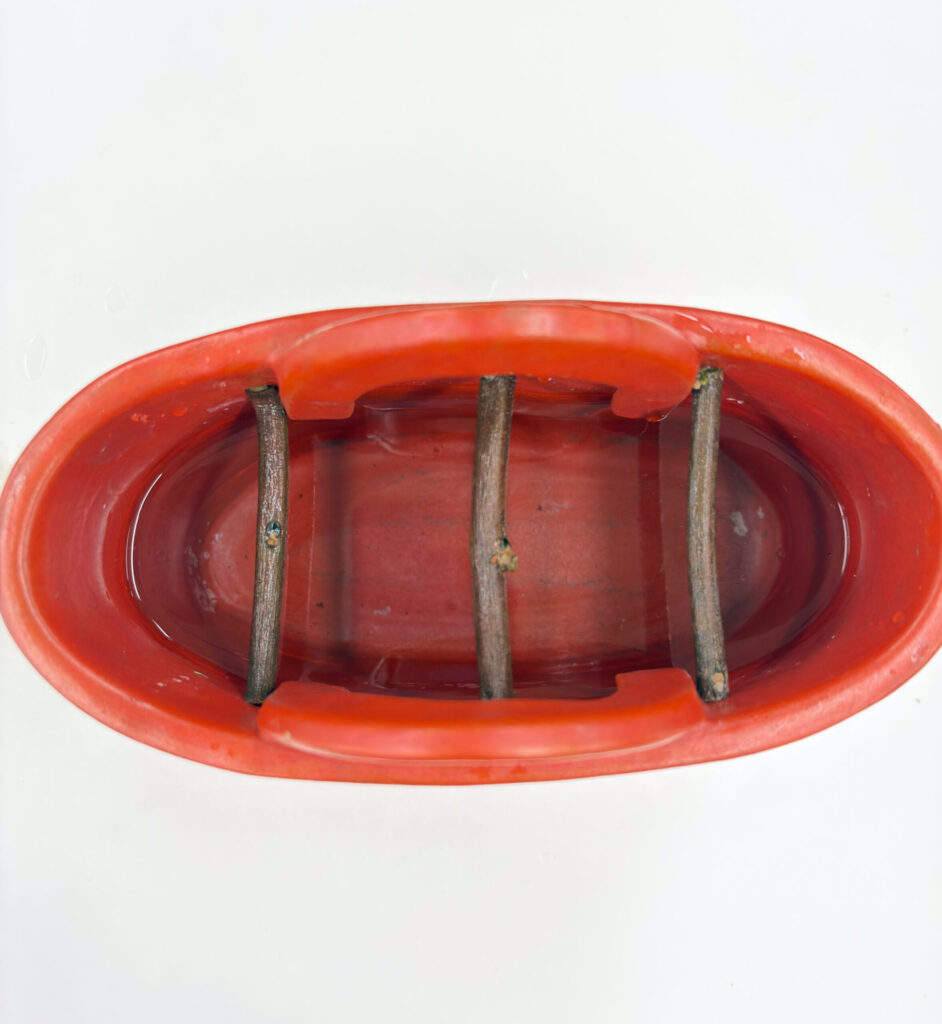
Side View and Depth – Designing with Multi-Angle Awareness
Ikebana’s charm lies in its multi-angle nature—even the simplest arrangement can reveal new beauty from different perspectives.
In this piece, placing gladiolus leaves toward the back created a sense of depth and spatial layering.
Designing with 360-degree viewing in mind gives the arrangement a sculptural quality.
This approach is especially important when displaying flowers in public spaces, clinics, or waiting areas.
Creating beauty that holds from every angle is a form of respect for the viewer.

From a Doctor’s Viewpoint: Flowers as a Gentle Prescription
As a physician, I meet many patients every day.
I’ve come to deeply understand that healing the mind is just as essential as treating the body.
Ikebana brings emotional comfort and quiet vitality—through form, balance, and silence.
A piece like this, which combines strength and calm, can act as a silent encouragement to anyone who sees it.
Flowers in clinical spaces aren’t a luxury.
They’re a prescription for mental well-being, one without side effects.
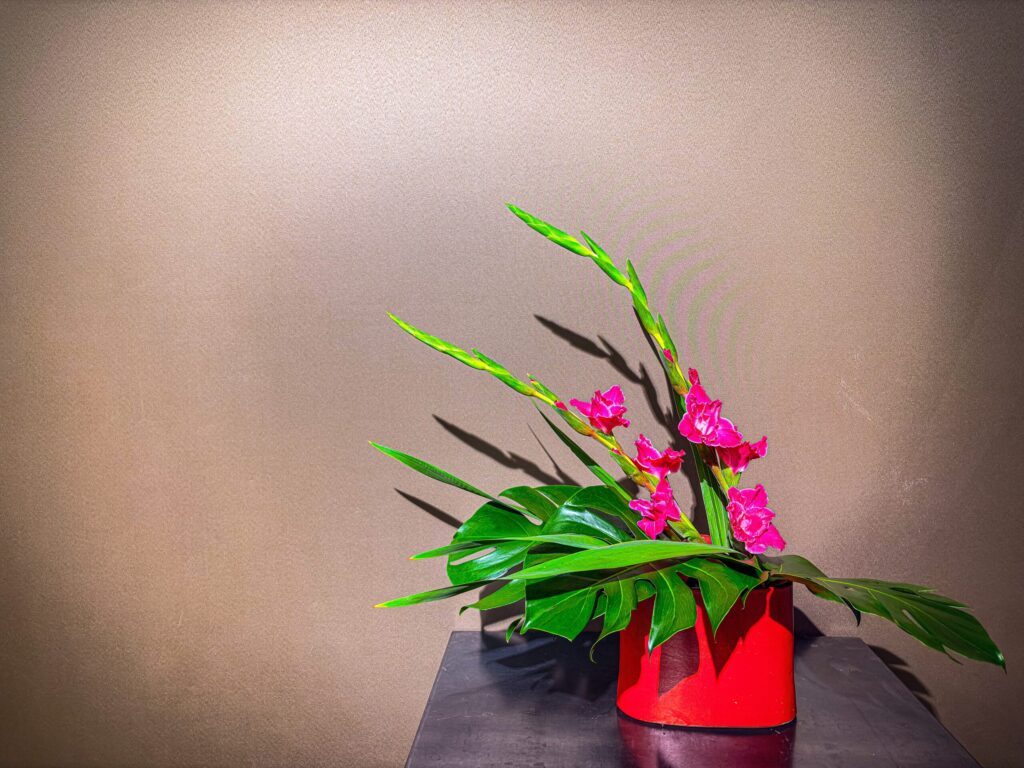
🔗 Related links
🌸 For those who feel inspired to experience flowers firsthand:
👉 Try an Ikebana Class in Omotesando (EN)
🌿 For those with a busy lifestyle…:
👉 Fake Greenery for a Healing Space (EN)
🌸 Send Flowers Worldwide — A Thoughtful Gift Across Borders
There’s something timeless and powerful about giving flowers. Whether it’s a birthday, an anniversary, or simply a “just because” gesture, a thoughtfully arranged bouquet can speak volumes when words fall short.
As a flower enthusiast and physician, I’ve seen how even a single bloom can lift someone’s spirits. If you’re looking for a reliable way to send flowers—not only within the U.S. but also internationally—I recommend Flower.com. They offer beautiful seasonal arrangements, gift baskets, and even same-day delivery in many countries around the world.
From Japan to Europe to the Americas, Flower.com partners with local florists to ensure your heartfelt gift arrives fresh and on time.
Because flowers don’t just decorate—they communicate care, warmth, and connection, no matter the distance.

※This is an affiliate link. Your purchase supports this blog – thank you
🌸 If this post inspired you to try ikebana, check out our recommended lessons here:
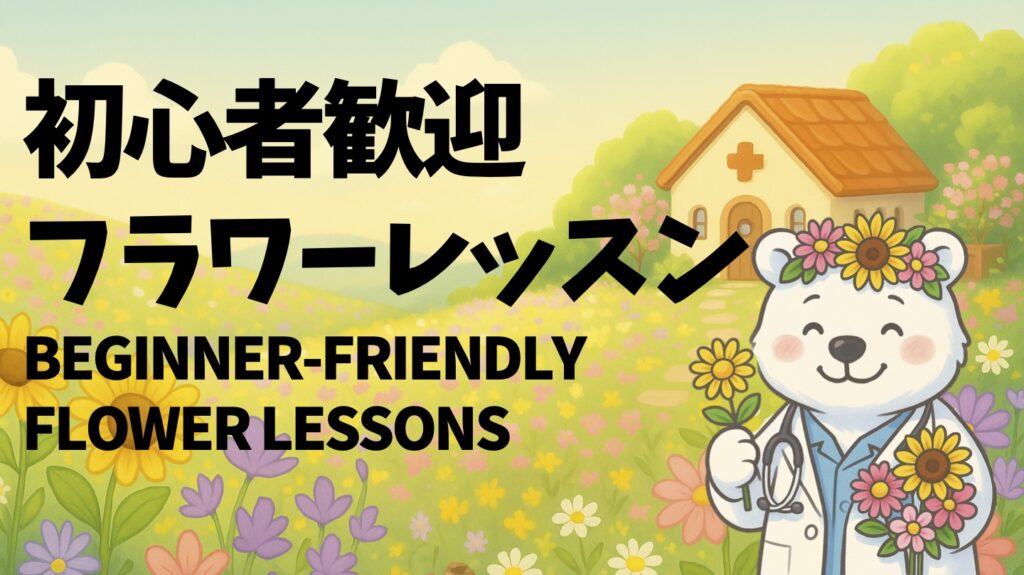
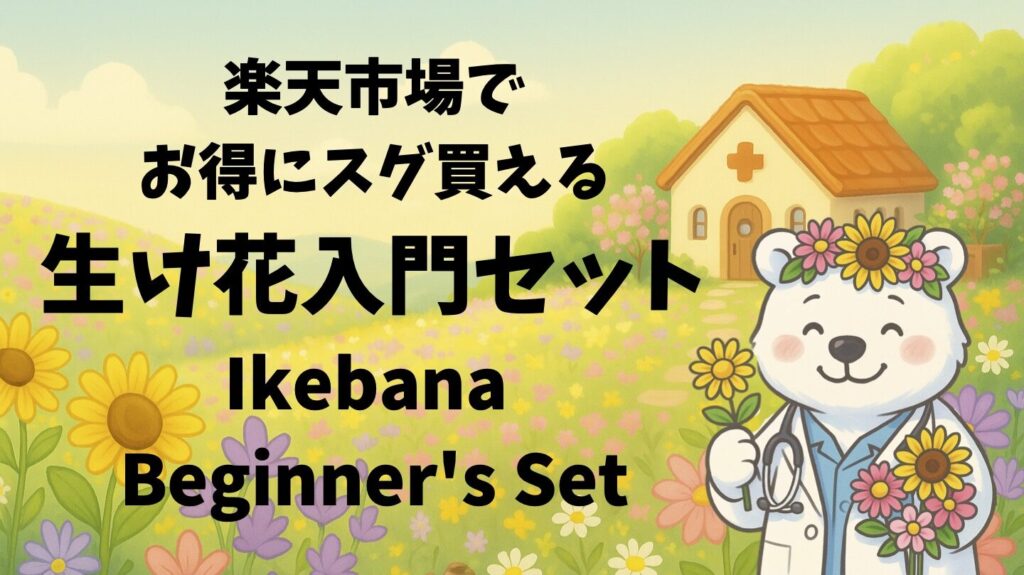
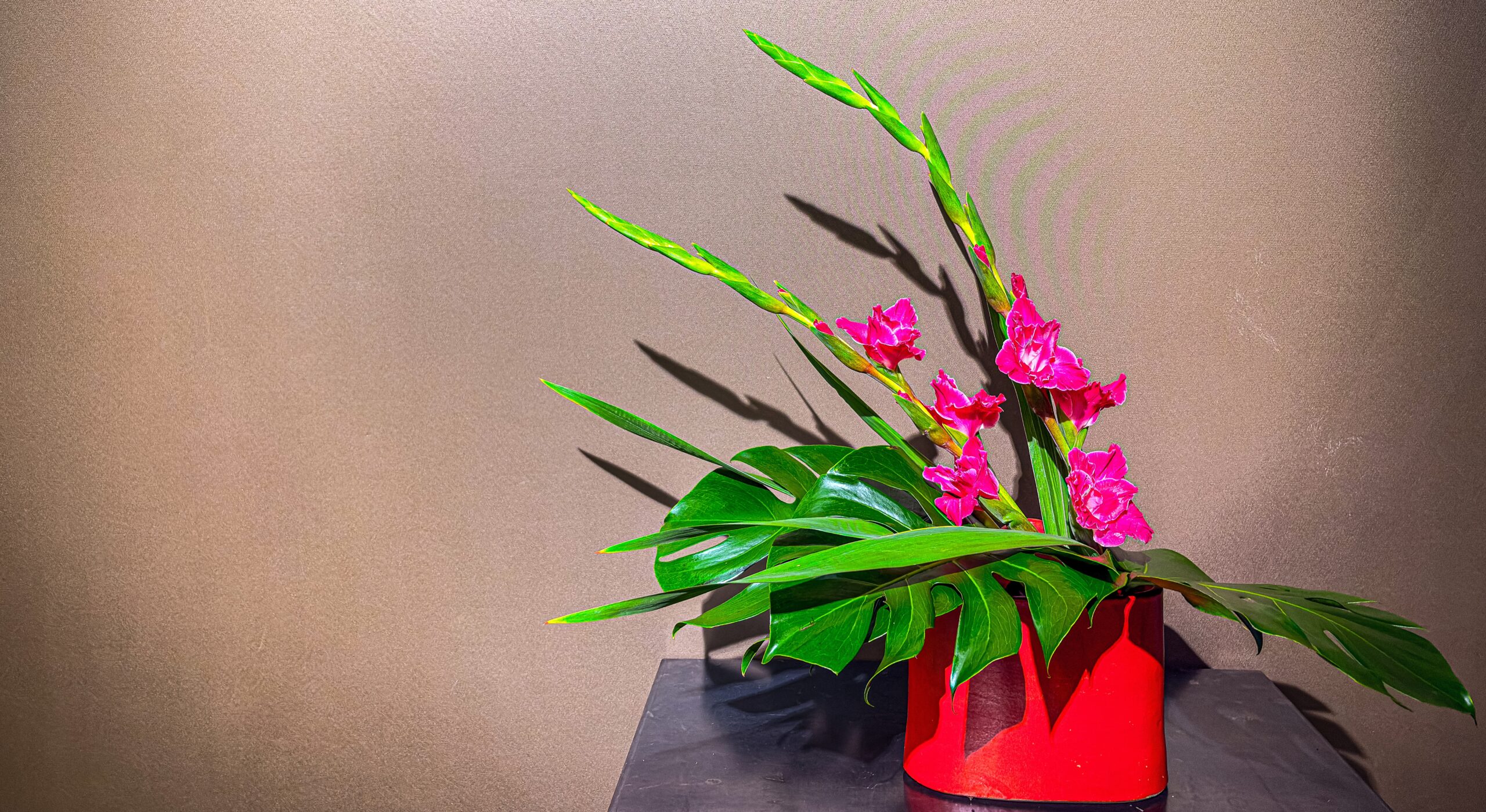


コメント